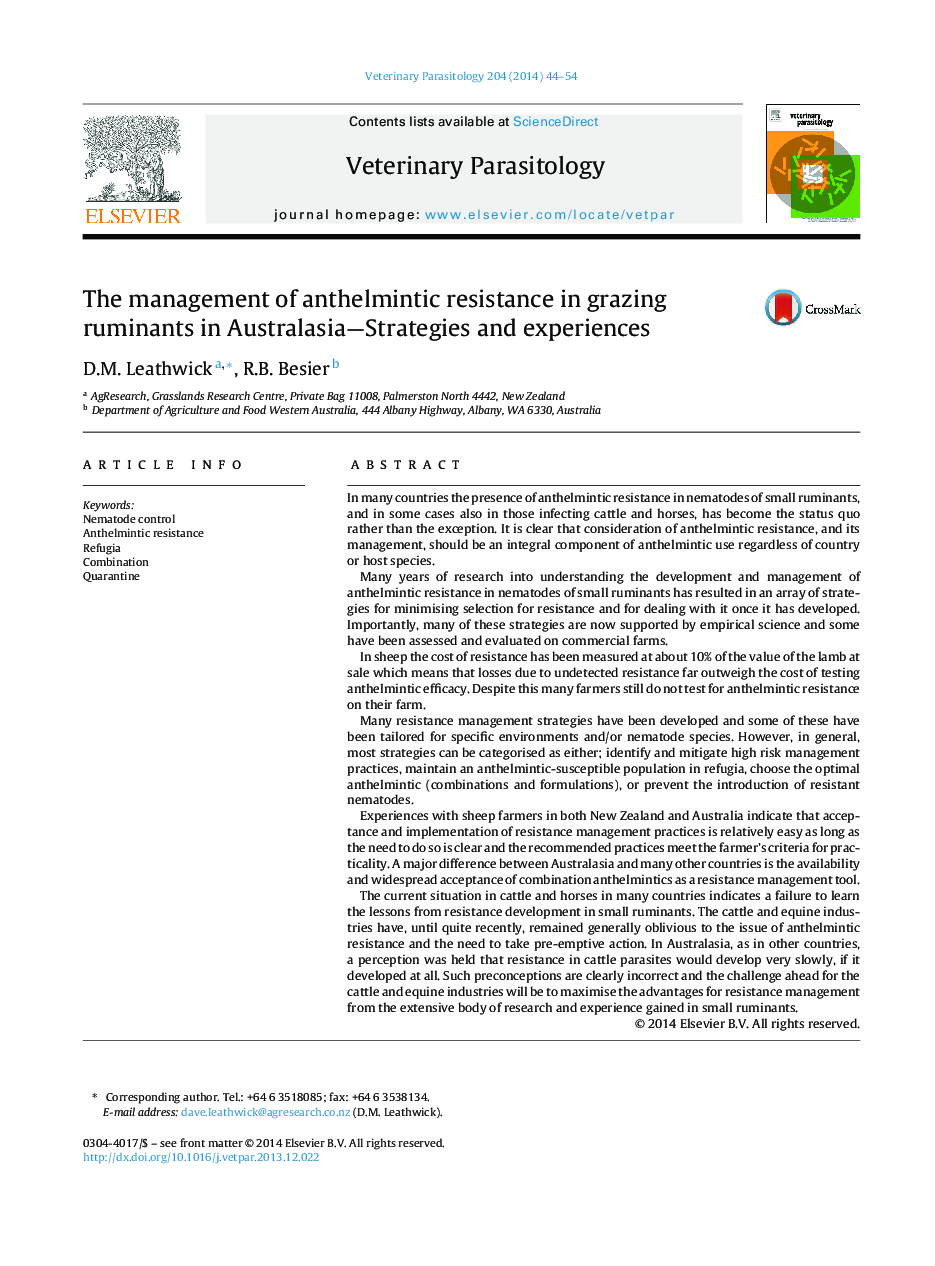| کد مقاله | کد نشریه | سال انتشار | مقاله انگلیسی | نسخه تمام متن |
|---|---|---|---|---|
| 2470018 | 1555683 | 2014 | 11 صفحه PDF | دانلود رایگان |
In many countries the presence of anthelmintic resistance in nematodes of small ruminants, and in some cases also in those infecting cattle and horses, has become the status quo rather than the exception. It is clear that consideration of anthelmintic resistance, and its management, should be an integral component of anthelmintic use regardless of country or host species.Many years of research into understanding the development and management of anthelmintic resistance in nematodes of small ruminants has resulted in an array of strategies for minimising selection for resistance and for dealing with it once it has developed. Importantly, many of these strategies are now supported by empirical science and some have been assessed and evaluated on commercial farms.In sheep the cost of resistance has been measured at about 10% of the value of the lamb at sale which means that losses due to undetected resistance far outweigh the cost of testing anthelmintic efficacy. Despite this many farmers still do not test for anthelmintic resistance on their farm.Many resistance management strategies have been developed and some of these have been tailored for specific environments and/or nematode species. However, in general, most strategies can be categorised as either; identify and mitigate high risk management practices, maintain an anthelmintic-susceptible population in refugia, choose the optimal anthelmintic (combinations and formulations), or prevent the introduction of resistant nematodes.Experiences with sheep farmers in both New Zealand and Australia indicate that acceptance and implementation of resistance management practices is relatively easy as long as the need to do so is clear and the recommended practices meet the farmer's criteria for practicality. A major difference between Australasia and many other countries is the availability and widespread acceptance of combination anthelmintics as a resistance management tool.The current situation in cattle and horses in many countries indicates a failure to learn the lessons from resistance development in small ruminants. The cattle and equine industries have, until quite recently, remained generally oblivious to the issue of anthelmintic resistance and the need to take pre-emptive action. In Australasia, as in other countries, a perception was held that resistance in cattle parasites would develop very slowly, if it developed at all. Such preconceptions are clearly incorrect and the challenge ahead for the cattle and equine industries will be to maximise the advantages for resistance management from the extensive body of research and experience gained in small ruminants.
Journal: Veterinary Parasitology - Volume 204, Issues 1–2, 30 July 2014, Pages 44–54
